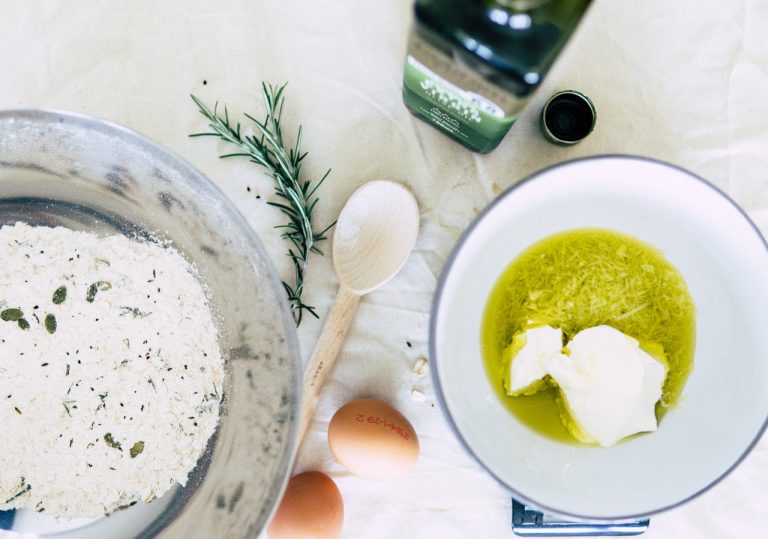Health Benefits of European Cuisine
Imagine a culinary journey that not only tantalizes your taste buds but also promotes your well-being. Welcome to the world of the Mediterranean Diet, a culinary masterpiece hailing from the shores of Europe but now thriving Down Under. In this article, we will delve into the rich tapestry of the Mediterranean Diet, unraveling its health benefits and discovering how this European cuisine has found its home in the heart of Australia.
A Brief Introduction to the Mediterranean Diet
Before we dive into the Down Under delights, let’s understand the essence of the Mediterranean Diet. It’s not just a diet; it’s a lifestyle, a philosophy that celebrates the harmony between food, nature, and human health. At its core, this diet is a reflection of the culinary traditions of the Mediterranean region, which includes countries like Greece, Italy, Spain, and southern France.
The Mediterranean Diet’s Essential Ingredients
Olive Oil: Picture golden-green olives gently crushed to extract their liquid gold. Olive oil, a cornerstone of the Mediterranean Diet, is packed with heart-healthy monounsaturated fats, antioxidants, and anti-inflammatory properties. It’s the elixir that gives Mediterranean dishes their unmistakable flavor and health benefits.
Abundant Fresh Produce: Colorful fruits and vegetables form the canvas of Mediterranean cuisine. Tomatoes, bell peppers, cucumbers, and leafy greens are generously used, infusing dishes with vitamins, minerals, and fiber.
Whole Grains: Say goodbye to refined grains and hello to whole grains like bulgur, quinoa, and farro. These fiber-rich wonders keep you feeling full and provide sustained energy.
Lean Proteins: Fish, poultry, and legumes are the preferred sources of protein. Fish, in particular, is rich in omega-3 fatty acids, known for their brain-boosting and heart-protective qualities.
Dairy in Moderation: Cheese and yogurt make occasional appearances, but in moderation. These dairy products are often enjoyed as accompaniments rather than main courses.
Herbs and Spices: The Mediterranean Diet relies heavily on aromatic herbs and spices like basil, rosemary, oregano, and garlic, enhancing both flavor and health benefits.
The Mediterranean Diet Down Under: A Flavorful Fusion
Now that we’ve got the Mediterranean Diet basics, let’s explore how this European culinary tradition has found its way to the Australian plate. Australia, with its diverse culture and culinary curiosity, has warmly embraced the Mediterranean Diet. Here’s how this fusion of flavors is taking root Down Under:
1. Farm-to-Table Philosophy:
In Australia, as in the Mediterranean, there’s a growing appreciation for fresh, locally-sourced produce. Farmers’ markets are bustling with vibrant fruits, vegetables, and herbs. This commitment to the farm-to-table approach aligns perfectly with the Mediterranean Diet’s emphasis on seasonal, locally-grown ingredients.
2. Olive Groves in Australian Soil:
Australia may not have the Mediterranean’s ancient olive groves, but it has embraced olive cultivation with zeal. Regions like South Australia and Western Australia have become home to thriving olive farms, producing high-quality olive oil that rivals the Mediterranean’s best. These Australian oils are celebrated for their exceptional taste and health benefits.
3. Fusion of Cultures:
Australia’s multicultural landscape has given rise to a delightful fusion of Mediterranean flavors with local ingredients. Imagine savoring a Greek-inspired lamb gyro made with premium Australian lamb or a wood-fired pizza topped with Australian-grown tomatoes and fresh basil. It’s a mouthwatering marriage of traditions.
4. Mediterranean Restaurants Proliferate:
From Sydney to Melbourne, Brisbane to Perth, Mediterranean restaurants are flourishing in Australian cities. These establishments offer authentic dishes that transport diners to the sun-kissed shores of Greece or the romantic streets of Rome. The Mediterranean Diet’s focus on communal dining and the pleasure of eating is a perfect fit for the Australian dining scene.
Health Benefits of Embracing the Mediterranean Diet Down Under
Now that we’ve explored how the Mediterranean Diet has taken root in Australia, let’s turn our attention to its health benefits, which are increasingly recognized and appreciated by health-conscious Australians.
1. Heart Health:
Australians have long been concerned about heart health, given the prevalence of cardiovascular diseases. The Mediterranean Diet’s reliance on olive oil, fish, and nuts rich in monounsaturated fats, coupled with its low saturated fat content, is a recipe for a healthier heart. It’s no wonder that the incidence of heart disease has seen a decline among those who follow this diet.
2. Weight Management:
Obesity is a global concern, and Australia is no exception. The Mediterranean Diet’s emphasis on fresh produce, whole grains, and lean proteins naturally encourages weight management. The fiber-rich foods keep you feeling full, reducing the temptation for unhealthy snacks.
3. Mental Well-Being:
It’s not just the body that benefits; the Mediterranean Diet also nourishes the mind. The omega-3 fatty acids found in fatty fish like salmon are known to support cognitive function and may reduce the risk of depression and cognitive decline.
4. Longevity:
Mediterranean communities are renowned for their longevity, and Australians are increasingly keen to emulate their success. The diet’s antioxidant-rich foods and olive oil have been associated with a longer, healthier life.
5. Reduced Risk of Chronic Diseases:
The Mediterranean Diet has been linked to a lower risk of chronic diseases like type 2 diabetes and certain cancers. The high intake of fruits, vegetables, and whole grains provides essential nutrients and antioxidants that support overall health.
The Mediterranean Diet in Action: A Day in the Life
To truly appreciate the Mediterranean Diet’s health benefits, let’s take a virtual stroll through a day of Mediterranean-inspired eating in Australia:
Breakfast:
A hearty omelet with tomatoes, bell peppers, and spinach, cooked in a drizzle of extra-virgin Australian olive oil.
A side of Greek yogurt topped with fresh berries and a sprinkle of crushed nuts.
A slice of whole-grain toast with a dollop of avocado spread.
Lunch:
A colorful Greek salad featuring cucumbers, cherry tomatoes, red onions, and feta cheese, drizzled with olive oil and sprinkled with oregano.
A serving of grilled Australian barramundi, seasoned with lemon and herbs.
A small portion of whole-grain couscous.
Snack:
A handful of mixed nuts and dried fruits.
Freshly cut carrot and cucumber sticks with a light tzatziki dip.
Dinner:
A Mediterranean-inspired vegetable and chickpea stew, simmered in a tomato and herb sauce.
A side of quinoa cooked with roasted garlic.
Grilled Australian lamb chops seasoned with rosemary and served with a lemon-mint sauce.
Dessert:
A bowl of fresh Australian strawberries with a drizzle of honey and a sprinkle of cinnamon.
A small serving of traditional Italian panna cotta made with low-fat milk and topped with a berry compote.

Conclusion
In the grand tapestry of global cuisine, the Mediterranean Diet stands as a masterpiece of flavor and health. Down Under in Australia, it has found a welcoming home, enriching the culinary landscape and improving the well-being of those who embrace it. This diet is not just about what you






